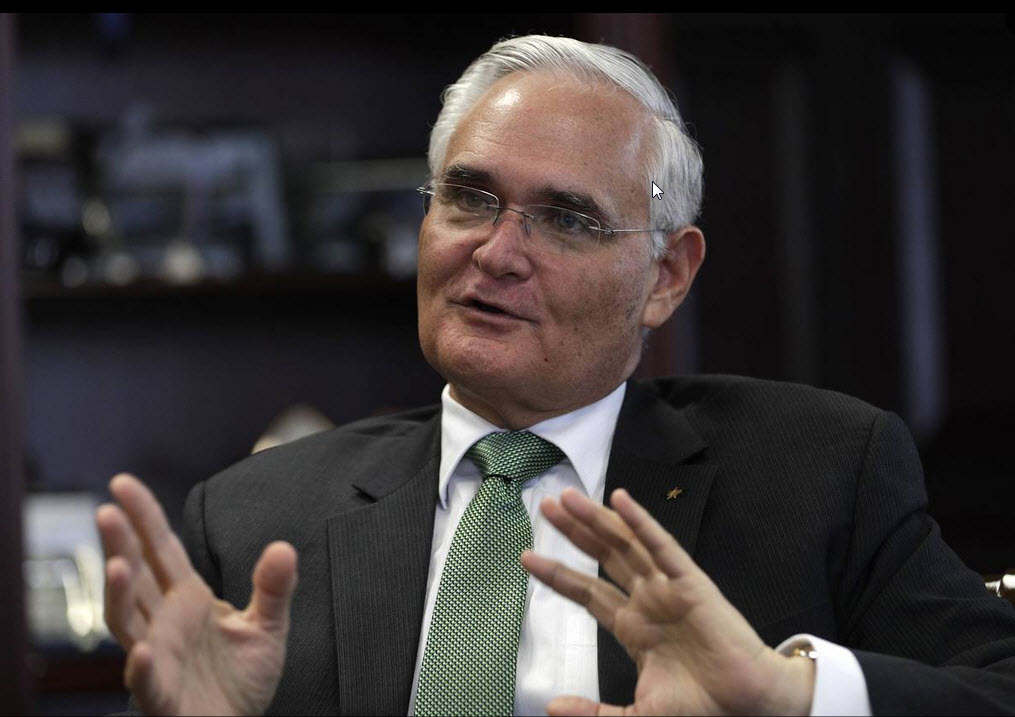The formation of new container shipping alliances and their new mix of vessel sharing agreements could have either positive or negative impact on the number of vessel transits through the Panama Canal, though signs are pointing more toward the positive, according to Jorge Quijano, ceo of Panama Canal Authority.
Quijano admitted that there are still uncertainties for transit activities at the canal since the start of operation in April 2017 of the three new carrier alliances – 2M, Ocean Alliance and THE Alliance, housing all of the world’s leading carriers.
“The forming of the new alliances means better utilisation of hardware so the lines will not have surplus capacity – this becomes a problem for us as we would rather have many more companies competing because they will all be using the canal competing against each other,” Quijano told Seatrade Maritime News in an interview at the sidelines of the Sea Asia 2017 conference held in Singapore last week.
Quijano said that the canal may lose three to four transits that are converted into one due to the alliances’ vessel sharing agreements. On the 2018 operational merger of the three Japanese lines (K Line, MOL, NYK), the Panama Canal is expected to benefit from it but there is also a downside risk.
“We now have all three Japanese lines each deploying 4,000 teu vessels through the Panama Canal but if they are going to combine and deploy 8,000 teu container vessels then that will have an impact on us. But if they were to put 14,000 teu vessels through the canal then we will come out as the winner since we will then use less resources to put one bigger vessel through,” Quijano explained.
“So it really depends on the mix of vessels that the lines will put through the canal. But we believe they [Japanese lines] will probably be putting ships of between 13,000-14,000 teu, though initially they may first cascade down the 9,000 teu vessels,” he said.
Quijano added that CMA CGM and APL separately were transiting the canal with 4,000-5,000 teu ships, but this could change as the lines plan to deploy larger ships which would be more than double the current sizes.
“Then Maersk Line swallowing up Hamburg Sud will see similar gains in sizes of ships for the canal. So the alliance can hurt us but the mixes that we have seen so far are pointing in the right direction for us,” Quijano said.
He added that from his conversations with China’s Cosco Shipping, the three Japanese lines, and the two Taiwanese lines of Evergreen and Yang Ming, they have all indicated plans to put 14,000 teu boxships through the canal.
On Tuesday the canal welcomed its largest vessel, the 13,092-teu neo-panamax Cosco Development, which is deployed by the Ocean Alliance under the South Atlantic Express (SAX) service connecting Asia-US East Coast via the Panama Canal.
The canal’s third set of locks went into operation 10 months ago, allowing containerships of up to 14,000 teu to transit. A grander expansion work for a fourth set of locks would accommodate ships of above 20,000 teu but the authority needs to first focus on securing more water resources for the artificial 77km waterway dug through the Isthmus of Panama.
Container shipping trade represents over 50% of Panama Canal Authority’s revenue, with some 2,977 container vessel transits recorded in 2016.
Lee Hong Liang
Asia Correspondent, Seatrade Maritime
